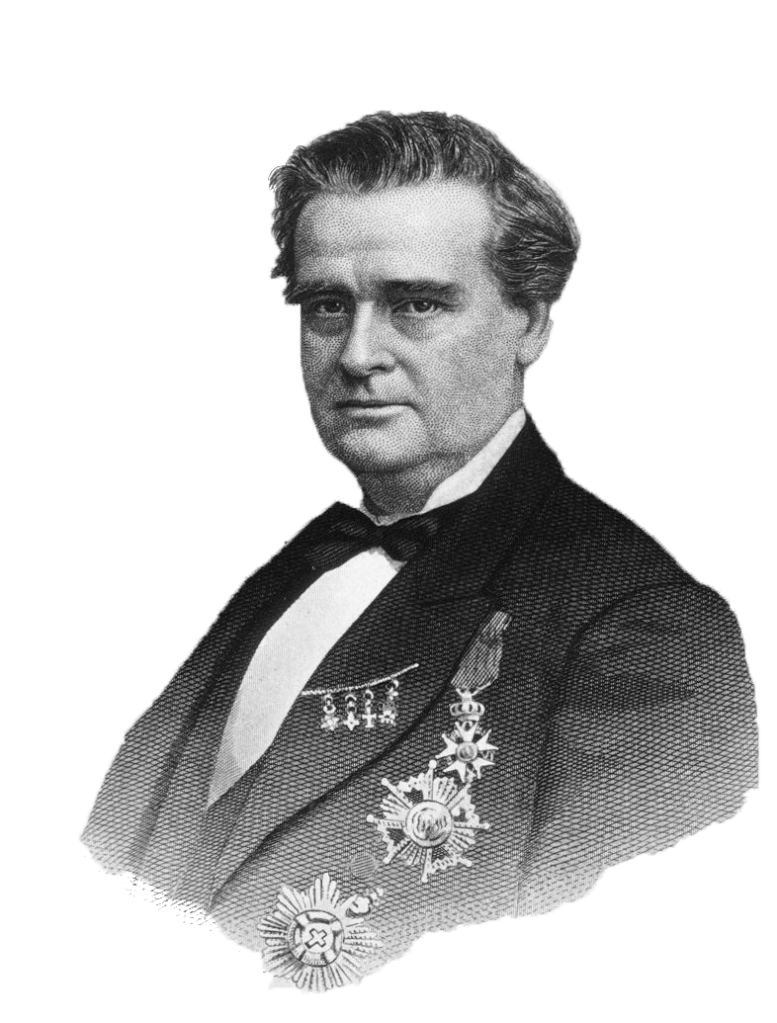Nowadays called the “Father of modern Gynecology”, James Marion Sims is praised by some and despised by others. The core of the polemic? Experimenting surgeries in enslaved black women without anesthesia back in the 19th century.

From 1845 until 1849, Sims experimented surgical techniques in enslaved black women to cure vesicovaginal fistulas, without anesthesia. It was during that period that he developed the Sims’ position for vaginal exams and the modern speculum – reasons why he is considered the “Father of modern Gynecology”.
Vesicovaginal fistulas had no cure when Sims began experimenting. This problematic complication of prolonged labors, back then, was an abnormal opening between the bladder and the vagina which resulted in an incapacity to control urination. Women with this complication frequently developed a condition considered repulsive and malodorous – what often led to damaged body image, low self-esteem, depression and social isolation.
The owners paid clothing and taxes and, during that time, Sims would take temporary ownership of the women until the treatment was successful. He even built a small hospital near his house so we could have easy access to the women.
Sims performed 30 surgeries only in Anarcha, a 17-year-old slave that had a complicated labor and delivery until he was satisfied with his method – search that had begun four years before. Lucy, Anarcha and Betsy are the only three names written in his records, even though at least more 7 enslaved women were subjects of his study. Anesthesia was not used during these procedures.
“There was never a time that I could not, at any day, have had a subject for operation”, wrote Sims in his autobiography about one of the advantages of this arrangement, also mentioning this as the most “memorable time” of his life.
In here, there are different versions for the reason of not using anesthesia and the consent of the women. After starting to operate white women, Sims started to use anesthesia. One theory that explains this is that black people don’t feel pain as white people do (a common racist belief back in the day) and white women couldn’t endure the pain of the procedure.
However, Sims also wrote in his notes that “Lucy’s agony was extreme”. She also became ill after Sims experimented one of the techniques. “I thought she was going to die… It took Lucy two or three months to recover entirely from the effects of the operations”, wrote Sims.
Another option is that the use of anesthesia was only widely spread in 1946, one year after Sims began experimenting, and even after that its acceptance was not universal. Also, Sims didn’t believe that the small amount of pain felt during the procedure was worth anesthesia related complications.When he later started to operate white women, its use was much safer and normal.

Regarding the consent, opinions also divide. Bettina Judd, assistant professor of gender, women and sexuality studies at the University of Washington point out to History that it’s not only about “whether you can say yes; it’s also whether you can say no” – it’s considered unethical to perform experimental surgeries on slaves because they can’t give voluntary and informed consent. Especially if the slaves’ value would diminish if they weren’t able to work or have children.
Others defend it also needs to be considered the amount of pain and social rejection that these women felt with this malodorous condition. It could be so unbearable that they would rather go through several painful operations than to live like that. An argument to support this belief is that these were very delicate surgeries and it wouldn’t be possible for Sims to operate the women if there was physical resistance, which implied consent. Also, Sims trained the women to be their medical assistances and they would hold each other while the operation was happening (which can both be perceived as consent or a wicked irony knowing next time it would be them on the operation table).
A lot of the people that defend Sims say that the historical and social context has to be considered when deciding if the doctor’s actions were correct or ethical – a time when slavery, experimenting and discovering new medical techniques were a common thing.
Sims relocated from South Carolina to Alabama for a fresh start, after the death of his two first patients. There, he started to build his reputation among rich slave owners by locating his house near plantations. The young doctor had no interest in gynecology nor the professional training for it – examining and treating female organs was even considered offensive at the time.
“If there was anything I hated, it was investigating the organs of the female pelvis,” admitted the doctor in his biography “The Story of My Life”.
However, it all changed when he was asked to treat a female patient that fell off a horse and had pelvic and back pain. Soon, he realized he had to look inside her vagina to be able to treat her. He had her on all fours, leaning forward – and that’s how the Sims’ position for vaginal exams was born. This discovery also led to what we know as modern speculum today – a fundamental tool for gynecologists – due to the need of seeing inside a vagina. Still, during the examination, Sims also realized the patient had a vesicovaginal fistula and began obsessing with finding the treatment.
The doctor also experimented with enslaved children, testing surgical treatments to treat neonatal tetanus, with little to no success. Sims also believed black people were not as intelligent as white people because their skulls didn’t follow the growth of their brain. Due to this belief, he operated newborns using a shoemaker’s tool to loosen their skulls – again with no success. All taken into consideration, some praise J. Marion Sims while others despise him. The fact is we don’t have enough information to make sure statements and the historical and social background play a big part – Sims could either be a consequence of the times or an unethical doctor that only cared about fame and money.
Rute Cardoso
Sources:
https://www.theatlantic.com/health/archive/2018/04/j-marion-sims/558248/
https://www.history.com/news/the-father-of-modern-gynecology-performed-shocking-experiments-on-slaves
https://www.ncbi.nlm.nih.gov/pmc/articles/PMC2563360/ https://www.usatoday.com/story/news/factcheck/2020/06/19/fact-check-j-marion-sims-did-medical-experiments-black-female-slaves/3202541001/ https://www.sciencedirect.com/science/article/pii/S0027968418302839

Leave a comment